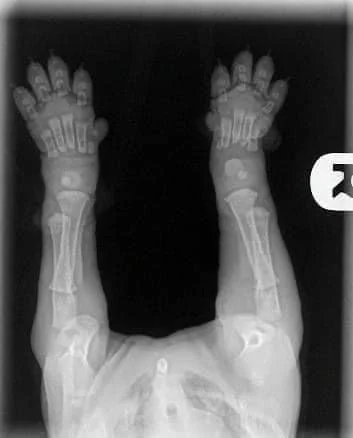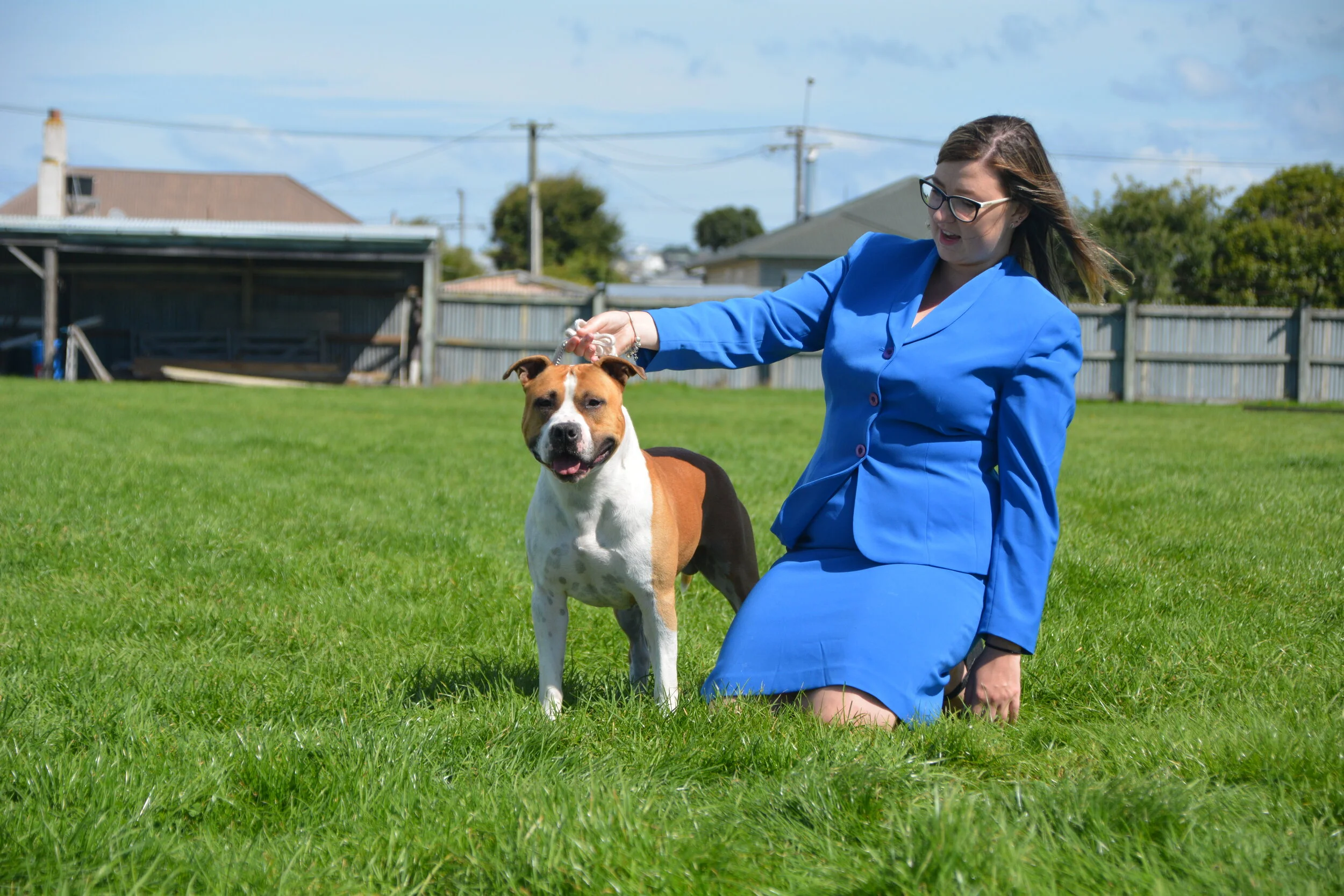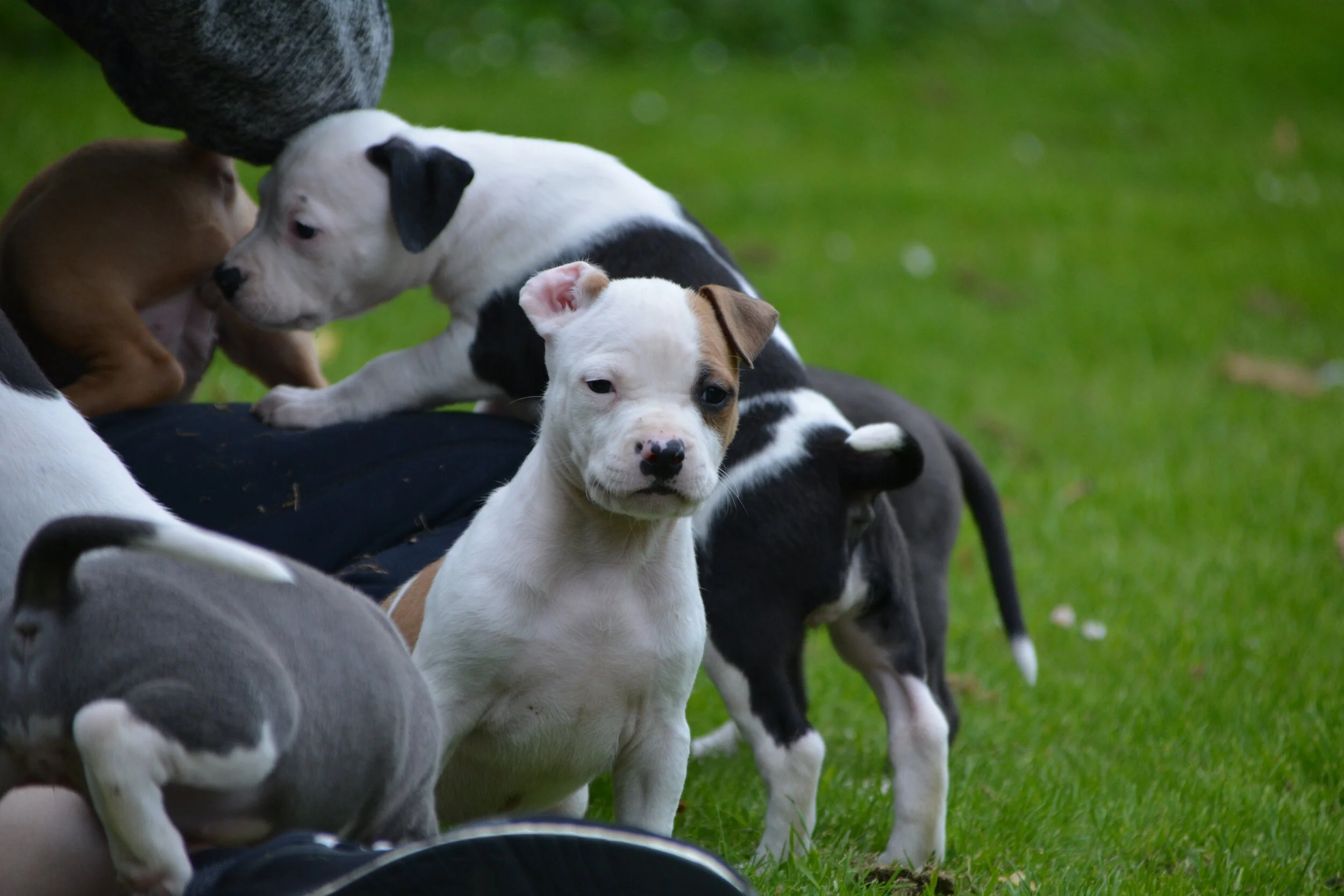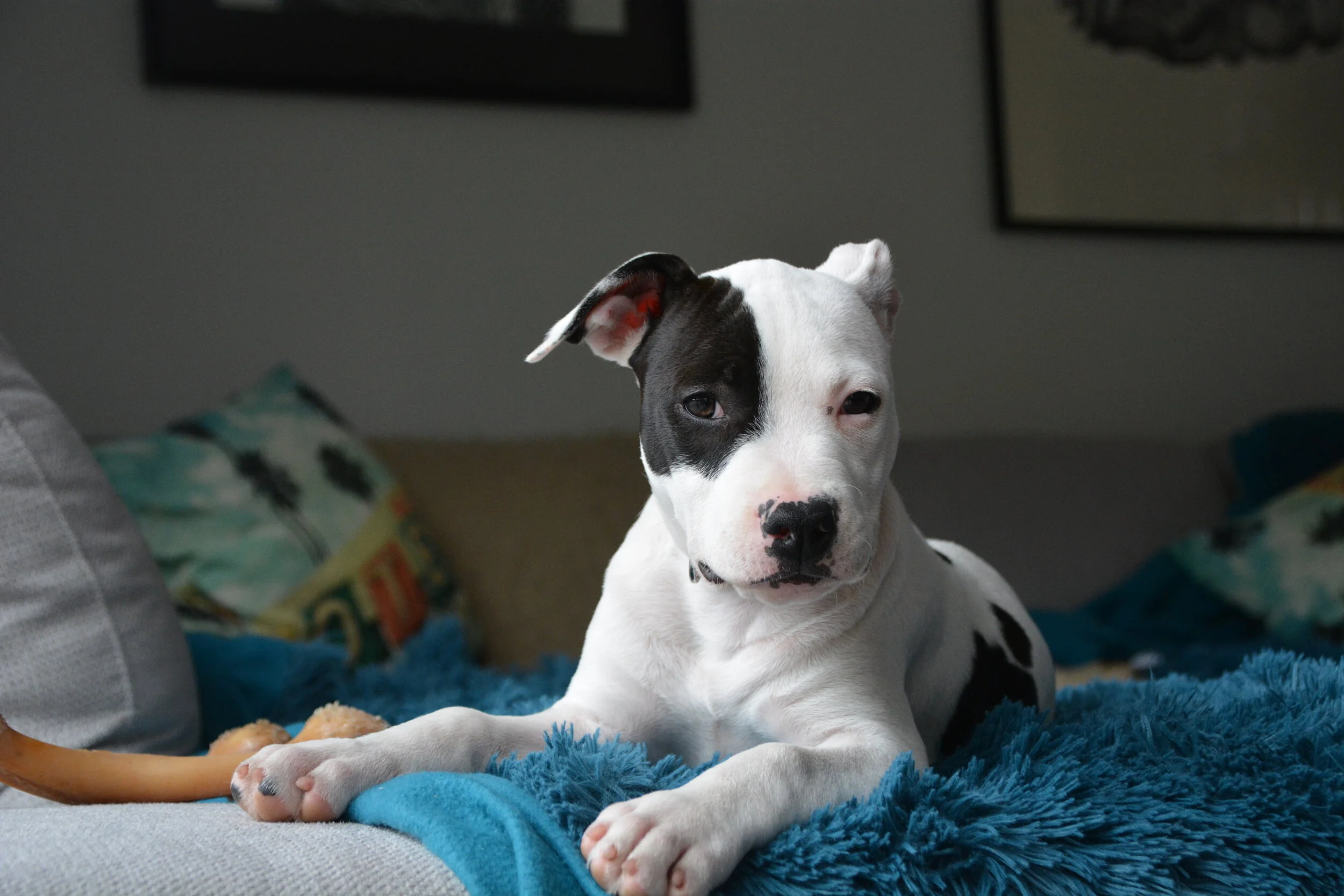Bringing your little Amstaff puppy home for the first time is an exciting moment for owners, families and friends. It can also be a little daunting for first-timers.
Zaliamstaff “High Society” ~ Sassy at 5wks
In this blog, we run through some tips on bringing your Amstaff puppy home.
Set up your Amstaff puppy’s space
Your little Amstaff needs a space with a bed, crate or blankets. They’ll come to see this as their den, which will help them to feel safe. Ensure they have water, toys and a feeding area in the space.
Note: Make sure all the bed, blankets and toys won’t make your puppy sick if they chew them or eat them.
Check out our Amstaff Puppy Essentials Checklist for hints on what you’ll need!
Keep your puppy in one room for the first day or two.
Giving your Amstaff puppy a single room or quiet place to get used to will help them feel at home and calm. A tiled bathroom is ideal for at night, but make sure it is warm, has comfortable bedding, and some airflow.
At a pinch, you could use the laundry, but it might restrict your washing cycles!
Puppy-proofing your house
The simplest rule is: If you do not want something chewed, put it away! Remove hanging wires, cords or electrical cables that your Amstaff puppy could chew or get tangled in. Remove breakable items to areas that your puppy can’t reach.
And try to keep toilet lids closed to stop your Amstaff puppy/puppy from drinking from the toilets, or falling in.
Note: You need to constantly supervise the puppy as it explores over the first few days, so you will soon see anything that was missed!
Let your puppy explore their new home slowly
Even a smaller house can seem big to a new dog, especially a puppy. Do not allow your puppy to roam of all areas in the house straight away. Allow your little Amstaff to explore slowly, we would suggest starting with the living area first.
Note: A room by room approach will help to avoid overwhelming him or her.
Taking your Amstaff puppy outside
It’s a good idea to take your puppy out to the back yard or garden on a lead for short, regular visits. You will need to supervise your Amstaff constantly when outside for the first week or two, and it’s best to use a light leash.
Watch your Amstaff puppy in the garden to identify hazards that may be present. Of course, you can do a sweep of the garden beforehand. Once again: If you do not want something chewed, put it away!
You need to make sure that your Amstaff puppy or puppy cannot get under or over the fence. Be sure to remove climbable objects near the fence, which might become escape routes!
Praise and reward your Amstaff puppy or puppy when he or she toilets outside, and remember to take them outside as soon as they wake or after their meal to ensure no accidents inside.
Introducing your Amstaff puppy to the family
A new home and new people can be overwhelming for an Amstaff puppy. Ask your family and friends to keep the house calm and quiet. Never force attention on your little Amstaff. Let them decide when he or she is ready and wants to interact with you.
Don’t let everyone cuddle or play with the puppy at once, as this will be scary for them. This can be a real challenge, so you might want to restrict the number of visitors you have for the first week or so!
Always Supervise Children With Your Amstaff Puppy
Both your young dog and children can be over-enthusiastic and sometimes rough, so it’s a good idea to set ground rules. Teach children (and adults who aren’t used to dogs) to be gentle and respectful towards them. This will teach your Amstaff to be gentle, too.
It’s very important that you show children how to handle and pet your pup properly so that the children or the Amstaff puppy won’t get hurt or scared.
Letting children play tug-of-war games with your Amstaff puppy, is not a good idea, as it’s not an interaction that you’ll want as the puppy grows.
Encourage people to have appropriate contact with your Amstaff puppy such as helping to train them, playing hide and seek, or taking the Amstaff puppy for short walks. Again, you need to supervise and be in charge of these activities.
Note: Make sure children stay away from the Amstaff puppy when he or she is eating, sleeping or in a crate.
Exercising Your Puppy
We highly recommend that you read our blog on The Importance of Not Over-Exercising a Puppy, prior to bringing your puppy home. You’ll find an easy way to calculate how much exercise to allow there.
We cannot stress enough how important it is to understand the exercise limits of your Amstaff puppy.
Introducing Your Amstaff Puppy to Other Dogs
If you already have a dog, it’s important to control the first interactions between them and your Amstaff puppy.
Make use of the space you previously set aside for your new puppy. Ensure your existing dog will not be able to get to them. This will prevent negative interactions when unsupervised, and at night. Ideally, you’ll have a similar space for your existing dog to be securely housed too.
Let your new Amstaff explore the house and garden alone, on a lead. Supervise their behaviour and let the dog become familiar with the area without being excited or afraid.
To introduce the two dogs, have both on a light, loose lead and in a safe, neutral area. You need to have enough space for the dogs to move away from each other (such as an enclosed garden or backyard). Let them sniff and interact.
It’s crucial that you stay relaxed and in control. Your behaviour will influence how the dogs react to each other.
Once they both appear relaxed, you can release the leads.
Note: Leave both the leads attached. This makes it easier to intervene if required.
Continue to supervise, but don’t interfere with the dogs as they get to know each other unless they are being aggressive to each other. If there is any excessive snapping or snarling, you’ll need to get involved. Please be very careful when doing this.
Note: If you are worried about this step, we recommend getting guidance.
Once the dogs are separated, you might need to place them both back in their “safe areas”. Give them both some time to settle down before introducing them again.
Note: Only introduce toys once your dogs are getting along well, and only when you can supervise them!
Feeding
Feed your dogs separately while they are getting to know each other, and always supervise feeding.
Always use separate bowls.
Note: Some owners choose to feed while their dogs are on a lead. This helps to stop any bullying over food if one dog finishes first.
Remember, your existing dog’s life has been disrupted by the new arrival! They may find this challenging and become upset, jealous or angry. Be sure you continue to give your existing dog all the attention he/she has received in the past, and make sure they still feel loved!
Note: Keeping up your existing dog’s routine will help them accept the new addition to the family.
CAUTION
If introducing your Amstaff puppy to your other dog(s) doesn’t go well, get professional advice immediately!
The majority of problems can be sorted out by professional guidance. The longer the issues continue, the harder they may be to correct. Do not delay!
Conclusion
Preparation is key, and knowledge is power! Get as many things as possible sorted out before you bring your puppy home. Once you have a little Amstaff in the house, you may struggle to find time to research.
You are more than welcome to ask us questions using our contact form.
We also recommend following the American Staffordshire Terrier Club New Zealand Facebook Page, and joining their wonderful community of current and future Amstaff owners.











